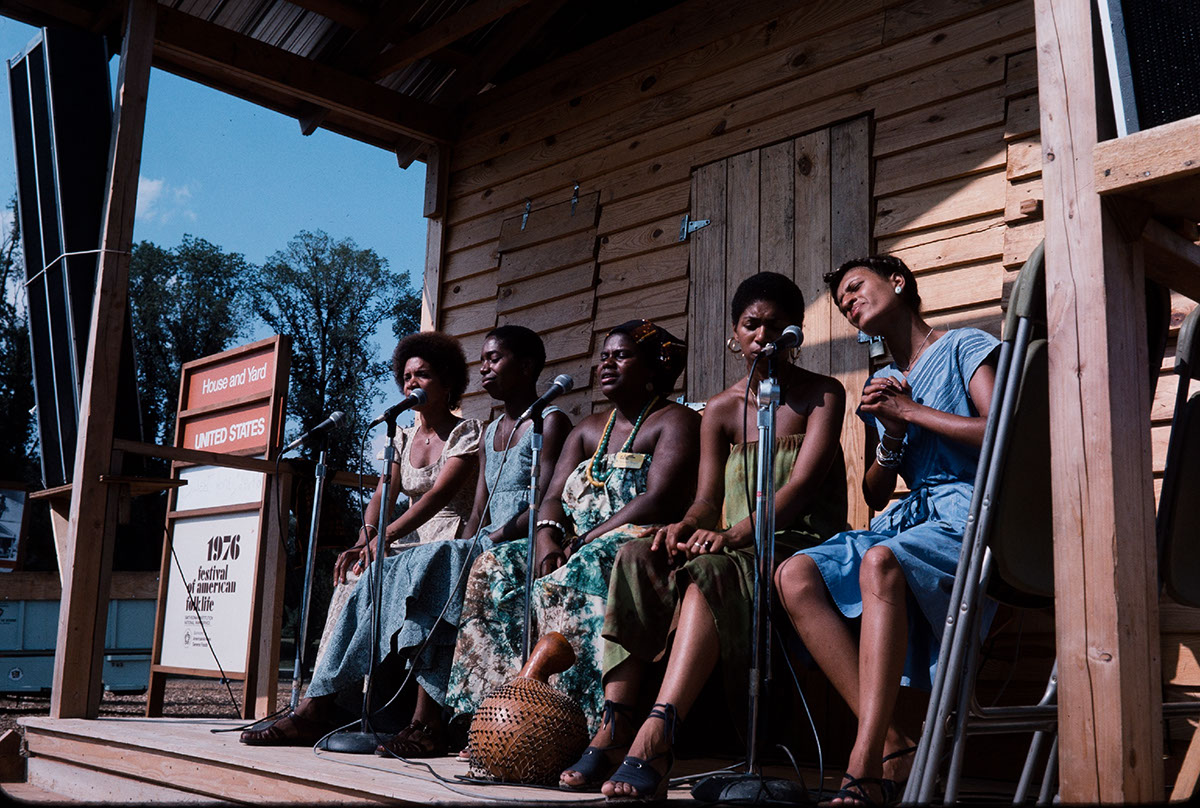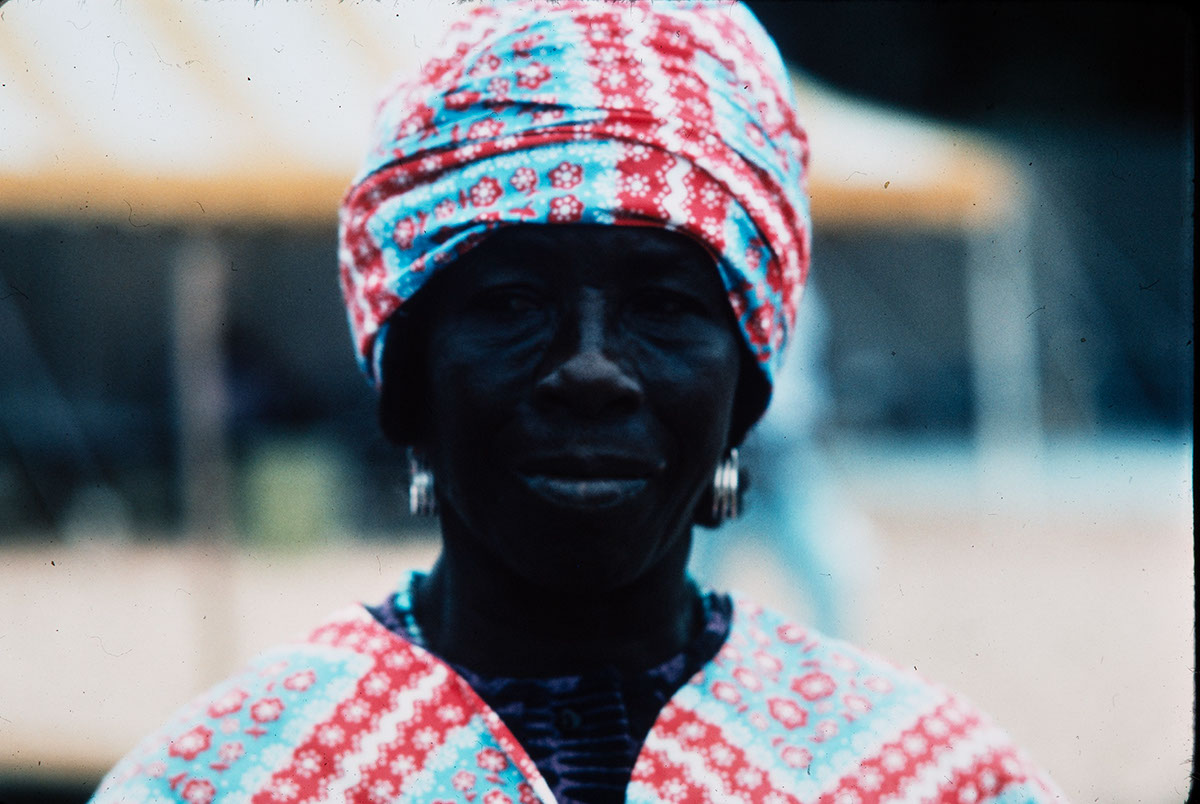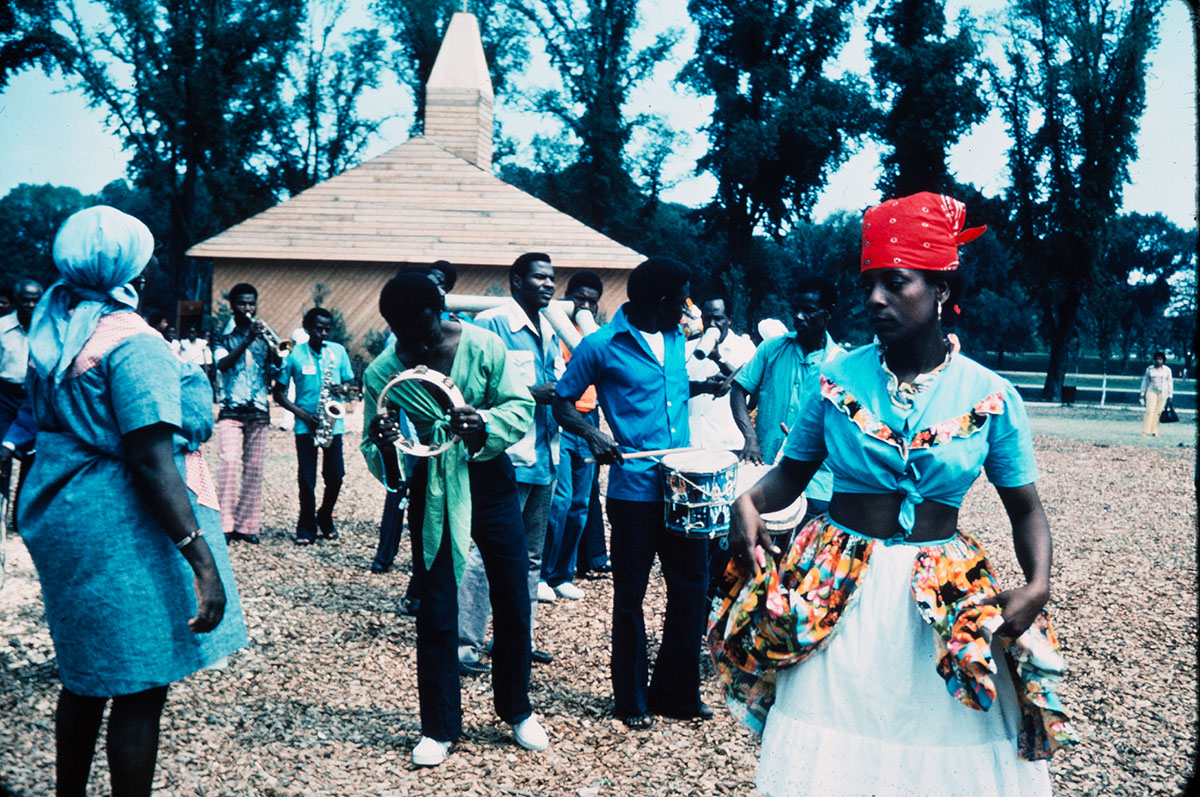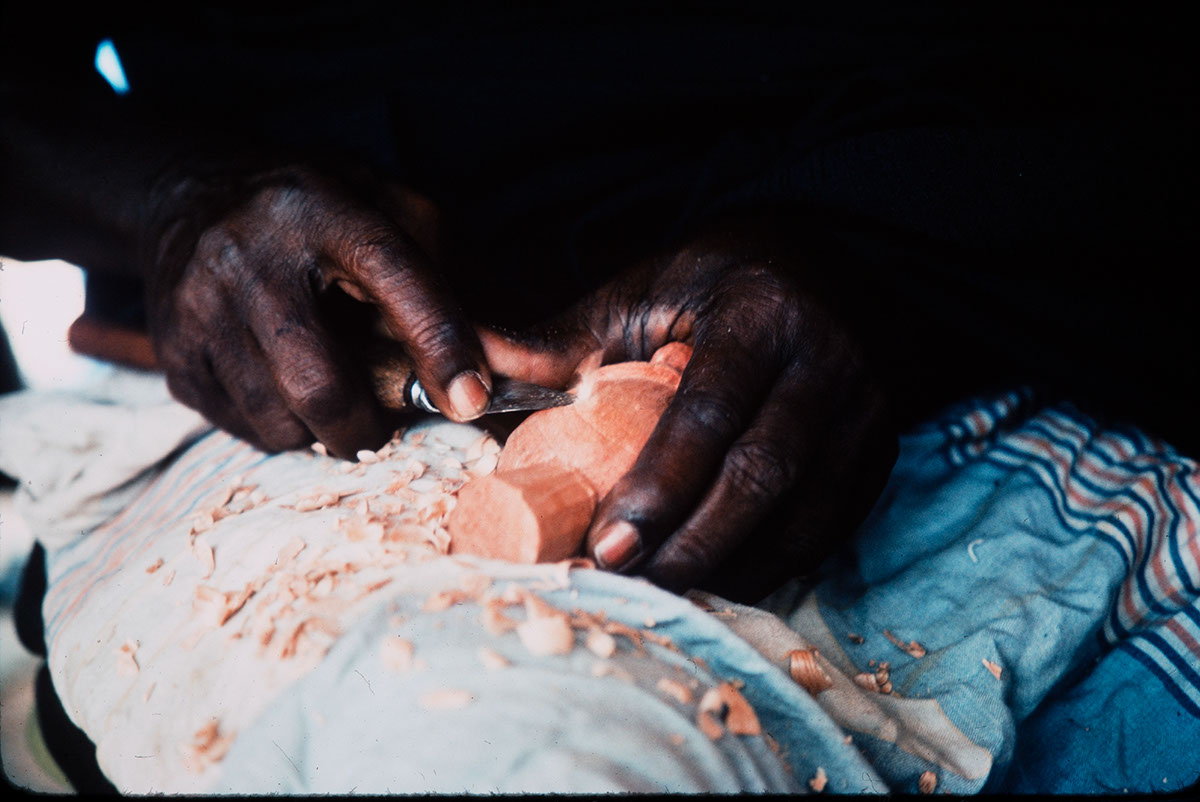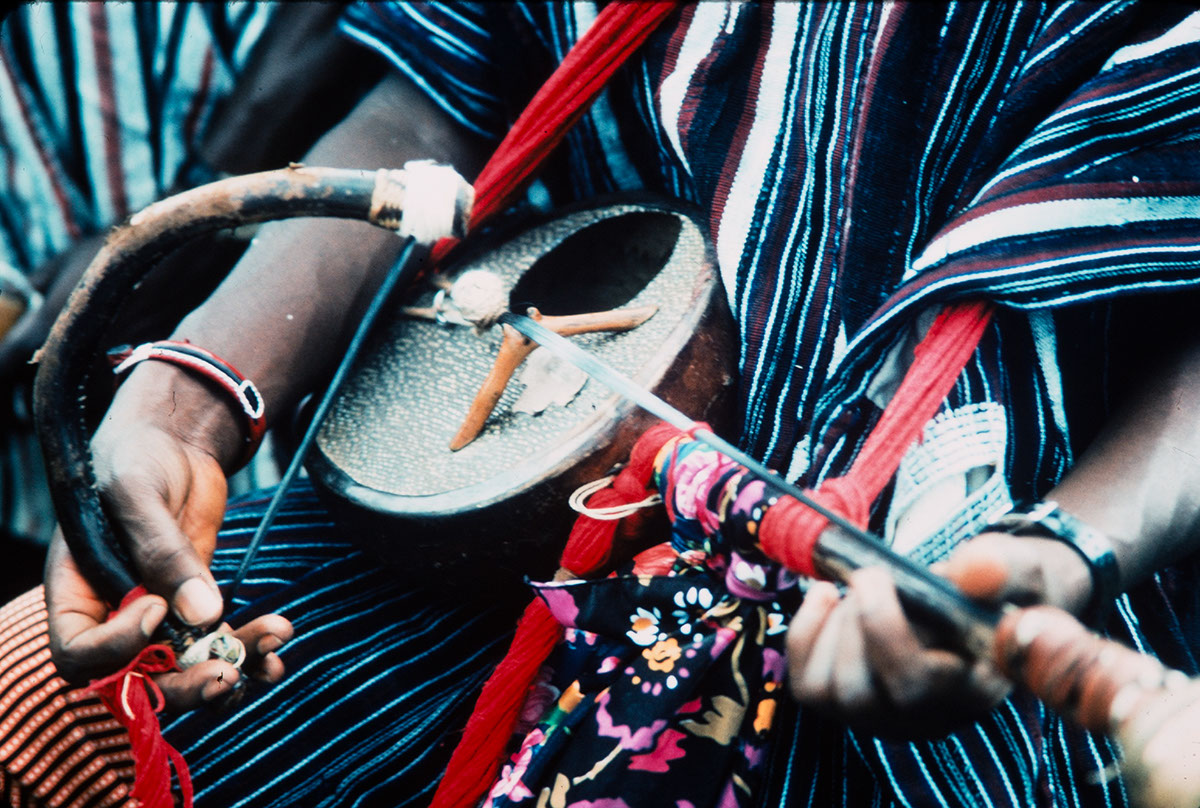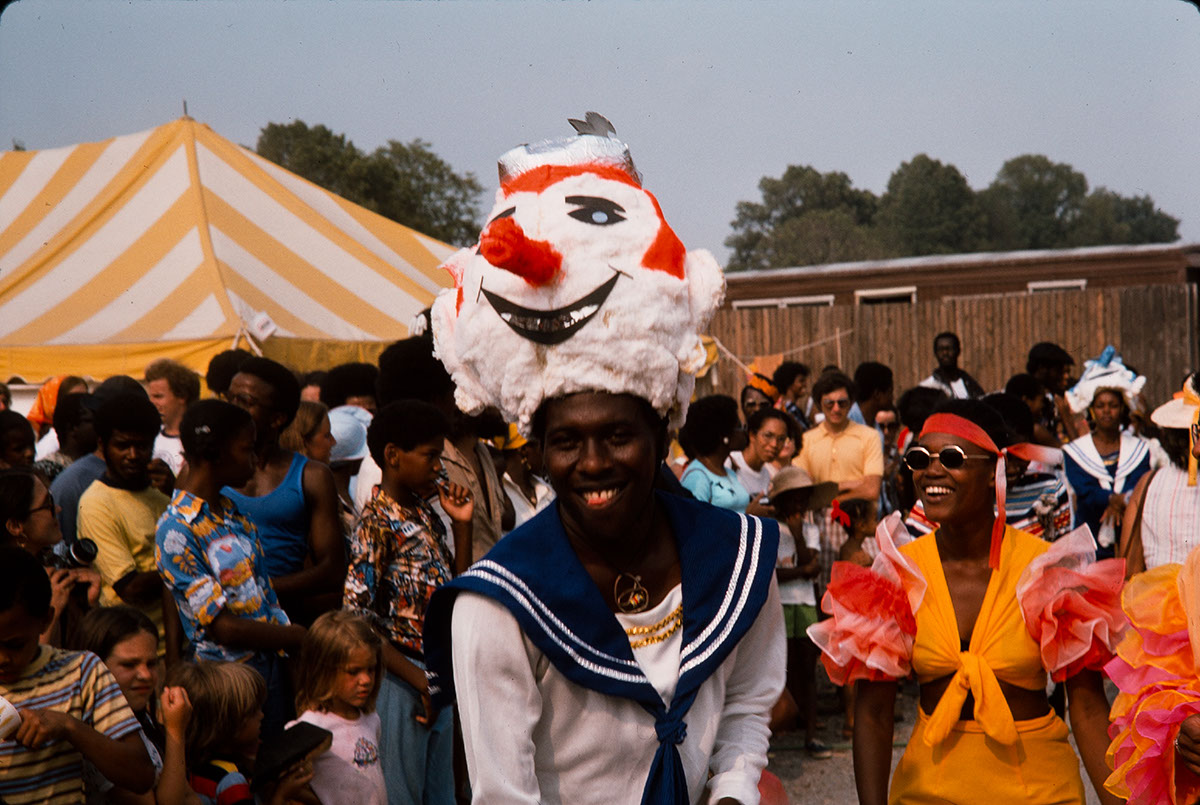The African Diaspora program was developed in 1973-74 to make a comprehensive statement about the dispersal of black culture. The area paid tribute to the varied cultural contributions of black American communities and documented how black peoples and cultures flourish throughout the world. Exploring those aspects of culture that link black Americans to Africa, Latin America, and the Caribbean, presentations centered on three activities common to all : home life, worship, and trade. Each was represented on the Mall by an appropriate physical structure: a house, an altar setting, and a marketplace. In each structure, the various artistic forms - music, crafts, material culture, dance, and the spoken word - depicted black culture as a dynamic, living force. The evolution of the culture was shown as black artists of all ages carried out their skills, be they traditional, evolved, or revival.
Different countries of Africa or the New World were featured each two weeks, with U.S. participants also rotating biweekly:
June 16-27, Ghana, Jamaica
July 1-11, Haiti
July 14-25, Liberia, Trinidad and Tobago
July 28-August 8, Nigeria, Brazil, Puerto Rico
August 11-22, Zaire, Surinam
August 25-September 6, Senegal
The African Diaspora program was led by Rosie Lee H. Hooks (Program Coordinator) and Bernice Johnson Reagon (Folklorist). It was organized with guidance from the African Diaspora Advisory Group, whose members included Roy Bryce-Laporte, James Early, Halim El-Dabh, Leonard Goines, Pearl Williams Jones, René López, Jane Sapp, Fela Sowande, A. B. Spellman, and William Wiggins, Jr. Fieldwork was conducted by members of the ADAG as well as Jason Dotson, Worth Long, Carol Maillard, and Adetokunbo Olatunde.


